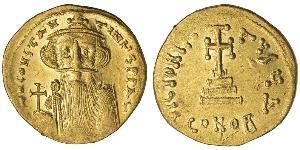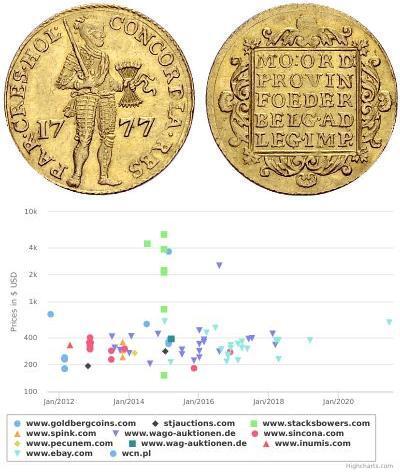1 Histamenon Byzantine Empire (330-1453) Gold Constantine IX Mono ...
1042, Byzantine Empire, Constantine IX. Gold Histamenon Coin
Mint Period: 1042-1055
Mint Place: Constantinople
Emperor: Constantine IX Monomachus
Denomination: Gold Histamenon Nomisma
References: Friedberg 248, DOC 2a, SB 1829.
Diameter: 29mm
Weight: 4.39gm
Material: Gold!
Obverse: Bust of Constantine IX facing, wearing loros and crown with pendilia, holding labarum in his right hand and globus surmounted by simple cross in his left.
Legend: + CWhSTA-nth – bASILEUS
Reverse: Christ enthroned facing, wearing nimbus crown, pallium and colobium, raising his right hand in benediction and holding book of gospels in his left.
Legend:
+ IhS XIS REX – REGNANTInM
In Eastern Christianity, the most widely used Christogram is a four-letter abbreviation, ICXC * a traditional abbreviation of the Greek words for “Jesus Christ” (i.e., the first and last letters of each of the words “IHCOYC XPICTOC” with a transliteration of the lunate sigma common in medieval Greek as “C”). On icons, this Christogram may be split: “IC” on the left of the image and “XC” on the right, most often with a bar above the letters (see titlos), indicating that it is a sacred name. It is sometimes rendered as “ICXC NIKA”, meaning "Jesus Christ Conquers."
Constantine IX Monomachos (Medieval Greek: Κωνσταντῖνος Μονομάχος, romanized: Kōnstantinos IX Monomachos; c. 980/c. 1000– 11 January 1055) reigned as Byzantine emperor from June 1042 to January 1055. Empress Zoë Porphyrogenita chose him as a husband and co-emperor in 1042, although he had been exiled for conspiring against her previous husband, Emperor Michael IV the Paphlagonian. The couple shared the throne with Zoë's sister Theodora Porphyrogenita. Zoë died in 1050, and Constantine continued his collaboration with Theodora until his own death five years later.
Constantine waged wars against groups which included the Kievan Rus', the Pechenegs and, in the East, the rising Seljuq Turks. Despite the varying success of these campaigns, the Byzantine Empire largely retained the borders established after the conquests of Basil II (r. 976–1025), even expanding eastwards when Constantine annexed the wealthy Armenian kingdom of Ani. Constantine accordingly may be considered the last effective emperor during the Macedonian Renaissance.
In 1054, a year before Constantine’s death, the Great Schism between the Eastern Orthodox and Roman Catholic Churches took place, culminating in Pope Leo IX excommunicating the Patriarch Michael Keroularios. Constantine, aware of the political and religious consequences of such a disunion, made unsuccessful efforts to prevent the breach.
| 1 | 2 |
|---|
(1500 X 733 pixels, file size: ~182K)
Posted by: anonymous 2018-03-15
Constantin IX. Monomachus 1042-1055. Histamenon, Konstantinopel. Sear 1828.GOLD. Vorzüglich
(2788 X 1300 pixels, file size: ~598K)
Posted by: anonymous 2024-04-07
Constantine IX AV Histamenon Nomisma Gold Jesus Christ Coin 1042 AD - NGC MS UNC
(3205 X 1485 pixels, file size: ~808K)
Posted by: anonymous 2024-04-11
Untitled Document 1042, Byzantine Empire, Constantine IX. Gold Histamenon Nomisma Coin. NGC XF 4/2! Mint Period: 1042-1055 Mint Place: Constantinople Emperor: Constantine IX Monomachus Denomination: Gold Histamenon Nomisma References: Friedberg 248, DOC 2a, SB 1829. Con ...
(800 X 351 pixels, file size: ~94K)
Posted by: anonymous 2015-08-28
CONSTANTINE IX MONOMACHUS (1042-1055). GOLD Histamenon. Constantinople. Obv: + IhS XIS REX REGNANTInm. Christ Pantokrator enthroned facing. Rev: + CWNSTAnTh bASILEVS Rm. Crowned bust of Constantine, wearing loros and holding labarum and globus cruciger. Sear 1829. Condition: Extremely fine. Wei ...
(876 X 414 pixels, file size: ~91K)
Posted by: anonymous 2015-08-27
BYZANTINE EMPIRE Constantinus IX, 1042-1055. Histamenon nomisma (solidus) n. d., Constantinople. Christ enthroned facing on lyre-backed throne, wearing cross nimbus, pallium and colobium. He raises r. hand in benediction and holds book of Gospels in l. hand. Rev. Crowned bust facing, wearing je ...
(1005 X 463 pixels, file size: ~122K)
Posted by: anonymous 2015-02-23
CONSTANTINE IX (1042-1055), gold histamenon nomisma, (4.40 grams), struck at Constantinople mint, scyphate flan, Class II, obv. Christ enthroned facing, with nimbus, hIS instead of ...
11 coins were uploaded from 2025-06-18 to 2025-06-25
One of them is:

-500-250-xWPBwcI0FXYAAAEm2.86TOhH.jpg)
-300-150-UlAKqUpYK3wAAAFiuois7yuw.jpg)
-300-150-TrqsHgTy0noAAAGOwKNb_Lrg.jpg)
-300-150-vpasHgTydJkAAAGOhksL5Mre.jpg)
-300-150-gOEKbzbirg4AAAFPuuJtcXWS.jpg)
-300-150-E2YKbzbij1cAAAFPS39tcXBo.jpg)
-300-150-pVMKbzbihuQAAAFLCP_k0Ljf.jpg)













